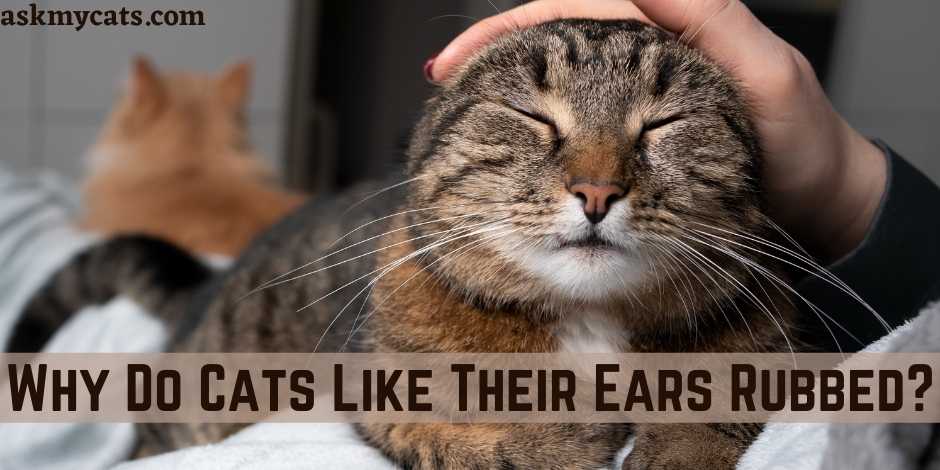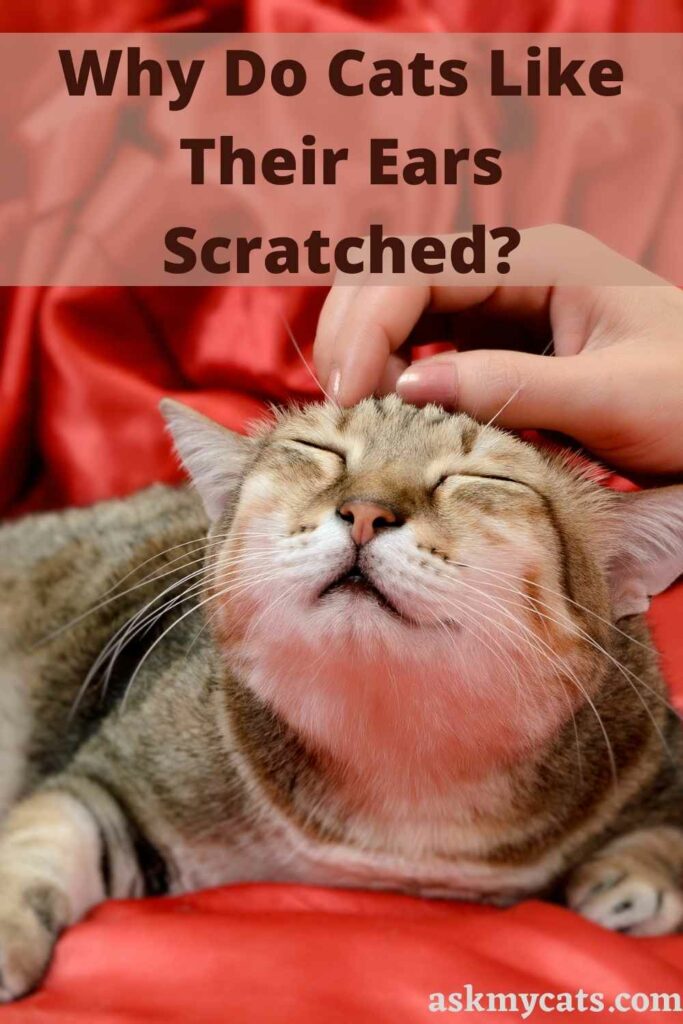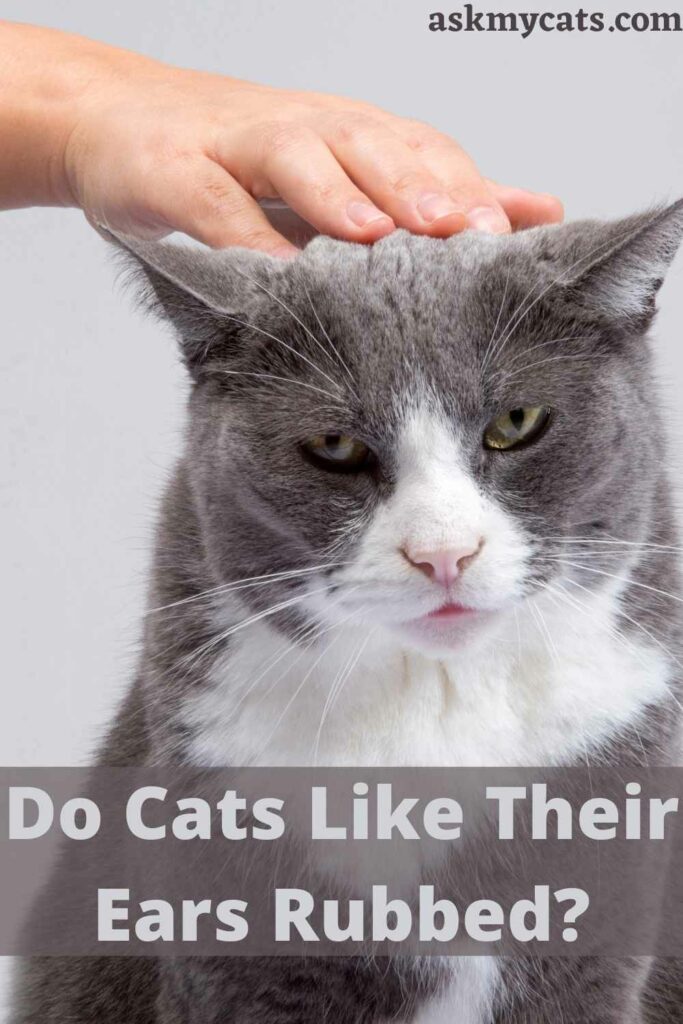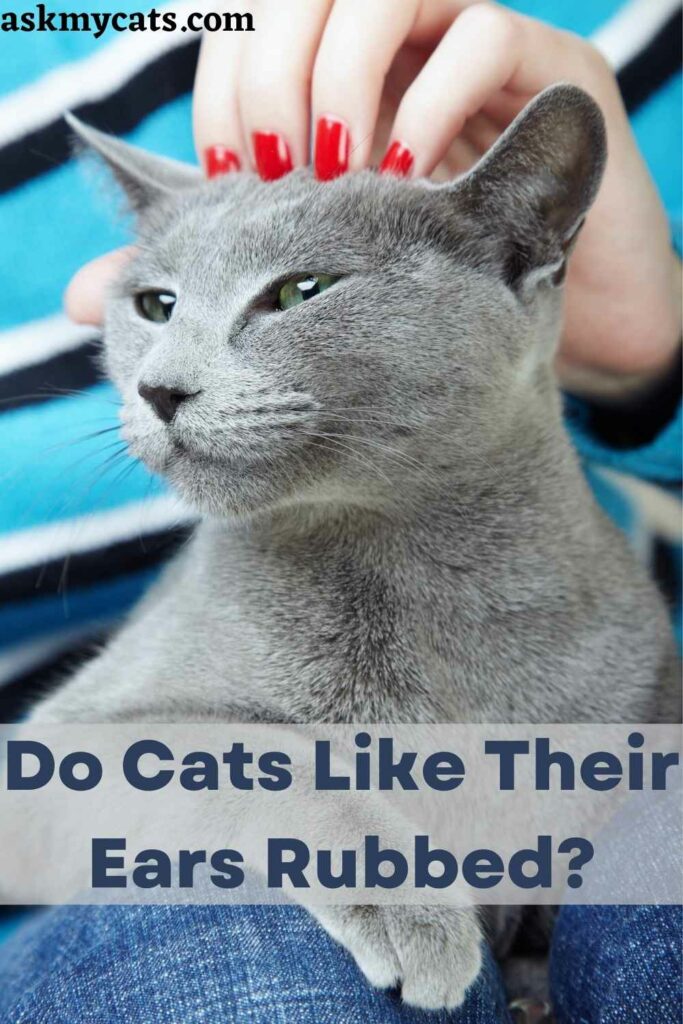The majority of cats enjoy being the center of attention. Some cats prefer it in the form of food or snacks, while others prefer it in the form of toys or games.
Petting, scratching, and stroking are common ways for cats to get attention. Not only can these types of touch soothe and relax your cat, but they can also soothe and relax you.
Petting cats have been found in studies to lower stress levels. Some cats may be averse to being petted, or they may simply require more time and patience to figure out what helps them relax.
This is especially true for cats who were not socialized as kittens or who were adopted as adults with unclear backgrounds. Given these complexities, let’s look into the specifics of petting your feline pal.
Why do cats like their ears rubbed?
Cats like their ears rubbed as this is where the scent glands are located around her face. If you extend your hand and they meet it with pressure to their head or cheek, this indicates that they are depositing their scent on you. it’s a way for them to show affection. The scent glands located between the ears and at the base of the ears are popular places for cats to be petted.
This article will talk about why cats like their ears rubbed and the right way to pet a cat.


Give Your Cat the Perfect Day
Get the Free Ebook!
Why Do Cats Like Their Ears Scratched?
Cats like their ears scratched as they are hotspots where most cats like to be petted because they have scent glands.

Cats are mysterious creatures. They slink around your legs, grooming themselves for pets.
When you start petting them, they bite you and flee.
Take some time to learn about your cat’s tendencies and proclivities when it comes to petting them to reduce your risk of upsetting the cat as well as being bitten. When you do, the cat will probably love you.
In general, the best places to pet a cat are around her face, where the scent glands are located.
If you extend your hand and they meet it with pressure to their head or cheek, this indicates that they are depositing their scent on you, a practice known as bunting.
Buntings leave a scent to mark their territory, but it’s also a way for them to show affection.
The scent glands located between the ears, at the base of the ears, on the cheeks, and under the chin are popular places for cats to be petted.
Light pressure down their neck and back, stopping just before their tail, may also be enjoyable.
If you’re unsure whether or not they’re enjoying it, keep an eye out for these signs of tension:
- Suddenly jerking their head to face you or your hand
- Batting your hand away with their paw
- Hissing at you
- Shifting away from you
- Twitching the skin on their back
- Shaking their head
- Thumping their tail
- Ears rotating backward
- No response (no purring, rubbing, etc.)
Cats are extremely sensitive to physical touch, and one wrong move can send them running in the opposite direction. Respect your cat’s desire not to be touched frequently if she does not enjoy being petted.
Do Cats Like Their Ears Rubbed?
Yes, cats like their ears rubbed.

Cats’ scent glands are concentrated at the base of the ear, making it an ideal location for petting.
Use a scratching motion and light pressure. Some cats are amenable to having their ears lightly scratched.
However, resist the urge to cradle the cat’s head in your hand, as this can be misconstrued as aggressive.
The back of a cat is probably the safest place to pet it. Apply gentle pressure and strokes that are slow and rhythmic.
The “sweet spot” is usually at the back end of the cat…yes, the top of the cat’s butt!
Make sure to come to a complete stop before you reach the tail – the tail is frequently off-limits.
When dealing with a new cat, begin by gently scratching the top of its head, between the ears.
Full-body pets, ear scratches, and tail scratches should be avoided until the cat has become completely acclimated to you, and you, in turn, are aware of the cat’s boundaries.
Every cat is unique and prefers different petting patterns. Some cats enjoy having their ears scratched, while others will not let you touch their ears.
As a result, you should try petting your cat in different places and gauge its reaction to that petting to determine what it likes and dislikes.
Cats will purr and relax when they are enjoying what you are doing, so pay attention to these cues. A cat will frequently lead you through the petting process by pressing its head or the part of its body that it wants to be petted into your hand.
Try gently rubbing and twisting the cat’s ears. Ear-oriented cats also enjoy having a knuckle rubbed lightly inside their ear. Take extreme caution not to injure the cat or pull too hard.
Do Cats Are If You Touch Their Ears?
Yes, cats do care if you touch their ears.

Many of us have had the experience of a friendly cat who seems to enjoy being stroked one minute and then bites or swipes at us the next.
It’s tempting to blame it on the cat at this point, but what’s more likely is that we’re not stroking them properly.
Although many cats enjoy being stroked and will choose us over food in certain situations, human interaction is something they have to learn to enjoy during their comparatively short sensitive period– between two and seven weeks old.
When it comes to human-cat interactions, human characteristics play an important role.
Our personalities and gender, the areas of the cat’s body we touch, and how we handle cats, in general, may all play a role in how the cat responds to our affections.
While some cats may become aggressive in response to unwanted physical attention, others may simply tolerate our social advances in exchange for the good stuff (food and lodgings).
However, a tolerant cat is not always a happy cat. Cats who are described by their owners as tolerating rather than actively disliking petting have higher stress levels.
Most friendly cats, as a rule, enjoy being touched around the areas where their facial glands are located, such as the base of their ears, under their chin, and around their cheeks. These areas are usually preferred over the tummy, back, and base of the tail.
Signs that your cat is enjoying getting its ears stroked are: –
- Tail held upright and choosing to initiate contact.
- Purring and kneading you with their front paws.
- Gently waving their tail from side to side while held in the air.
- A relaxed posture and facial expression, ears pricked and pointed forwards.
- Give you a gentle nudge if you pause while you’re stroking them.
Signs that your cat is not enjoying getting its ears stroked are: –
- Shifting, moving, or turning their head away from you.
- Remaining passive (no purring or rubbing)
- Exaggerated blinking, shaking their head or body, or licking their nose
- Rapid, short bursts of grooming.
- Rippling or twitching skin, usually along their back.
- Swishing, thrashing, or thumping tail.
- Ears flattening to the sides or rotating backward.
- A sharp sudden turn of their head to face you or your hand.
- Biting, swiping, or batting your hand away with their paw.
Many cats enjoy being touched, but many do not — and many tolerate it at best. Finally, when it comes to cats, it’s important to respect their boundaries — and the wildcat within — even if it means admiring their cuteness from a distance.
What Are The Other Places To Pet A Cat?
The other places to pet a cat are: –
1. Chin
The chin is a popular petting area. Begin at the front of the chin and gently scratch or rub along the underside of the chin, along the jawline, and all the way to the neck.
If your cat enjoys it, he or she may push against your fingers more forcefully or begin rubbing against your hand.
2. Forehead
Cats frequently headbutt items they enjoy in order to leave their scent. This is known as “bunting.” Rubbing the base of the ears mimics this motion, and your cat will thank you for it.
Gently scratch or rub along the base of the ears and across the forehead. You can rub your kitty’s head anywhere between the eyes and the ears to get some good head leaning.
Some cats prefer that you begin at the base of their ears, scratch their forehead, and then stroke over the top of their head and down their neck.
3. Back
Long strokes down the length of a cat’s back are appreciated by many. Simply run your hand over your cat’s back from head to tail, keeping the hand movement in the direction of the fur.
If your cat enjoys it, he or she may arch its back in a stretching motion or elevate its tail or back end. This will usually relax your kitty’s muscles and cause them to purr.
4. Cheeks
Another popular area for petting is the cheeks and sides of the face. Because cats have scent glands, they enjoy rubbing their faces on things around the house and would be delighted to rub their face on your hand as well.
Stroke gently from the nose to the side of the face, ending below the ears. You can also rub close to your cat’s lips if he or she enjoys having the area around their mouth scratched.
5. Base Of The Tail
When you stroke a cat’s back toward the tail, you may notice that he or she lifts his or her tail or rear end up. This could mean that your cat enjoys being petted or scratched at the base of its tail.
You can scratch this area if your cat prefers it, or apply a little more pressure here as you stroke down their back. This is yet another location with scent glands that many cats enjoy.
Some cats are particularly sensitive in this environment, so keep a close eye on your cat’s reaction to ensure that he or she is enjoying it rather than becoming irritated.
You might also like to read about why do cats like the base of their tail scratched
6. Let Her Be The Judge
Cats can be very particular about where they prefer to have their sweet petting spots. While one cat may enjoy being rubbed in one area, another may be irritated by the same action (and not afraid to let you know it).
Most cat owners will learn what their cat prefers over time. For example, if you simply hold out your hand or finger, your cat may approach and rub you where he or she wishes to be scratched or petted.
This is frequently along the side of their face or under their chin. Furthermore, when petting your cat, make sure to always pet in the direction that which the hair grows.
Frequently Asked Questions
Do cats like their head rub?
A friendly caress on the head, cheeks, or chin may remind cats of their grooming routine, which includes licking the backs of their paws and rubbing their heads. According to experts, t That’s a very loving gesture of a cat rubbing its forehead on a human, a friendly social behavior known as bunting.
Where should I not touch my cat?
Even if your cat appears relaxed next to you and is in the belly-up position, resist petting the belly. This is regarded as a vulnerable area of a cat’s body, and touching it may cause your cat to stiffen, hiss, and even claw you. And don’t tap the top of his head like you would your dog.
Why some cats don’t like to be petted?
Some cats simply do not like attention in the form of petting, and that is perfectly fine. Maybe your cat isn’t a social butterfly or has a cuddly personality. This could be due to a lack of socialization as a kitten, a history of abuse or neglect, or simply their personality. Some cats are more anxious than others and prefer to relax in peace and quiet. Look for other ways to attract this cat’s attention, such as treats, toys, or extra playtime. Perhaps this cat prefers to be left alone and bask in the sun in its favorite spot. That doesn’t mean you can’t socialize nearby.
Final Words
Petting your cat can be a very rewarding experience for both of you. It can help to strengthen your bond with your feline companion and make spending time together more enjoyable.
Keep in mind that you should keep a close eye on your cat for indications of what they like and dislike. Finally, remember to be patient and gentle at all times while bonding with your cat.
If you have any questions, ask us in the comments section.
